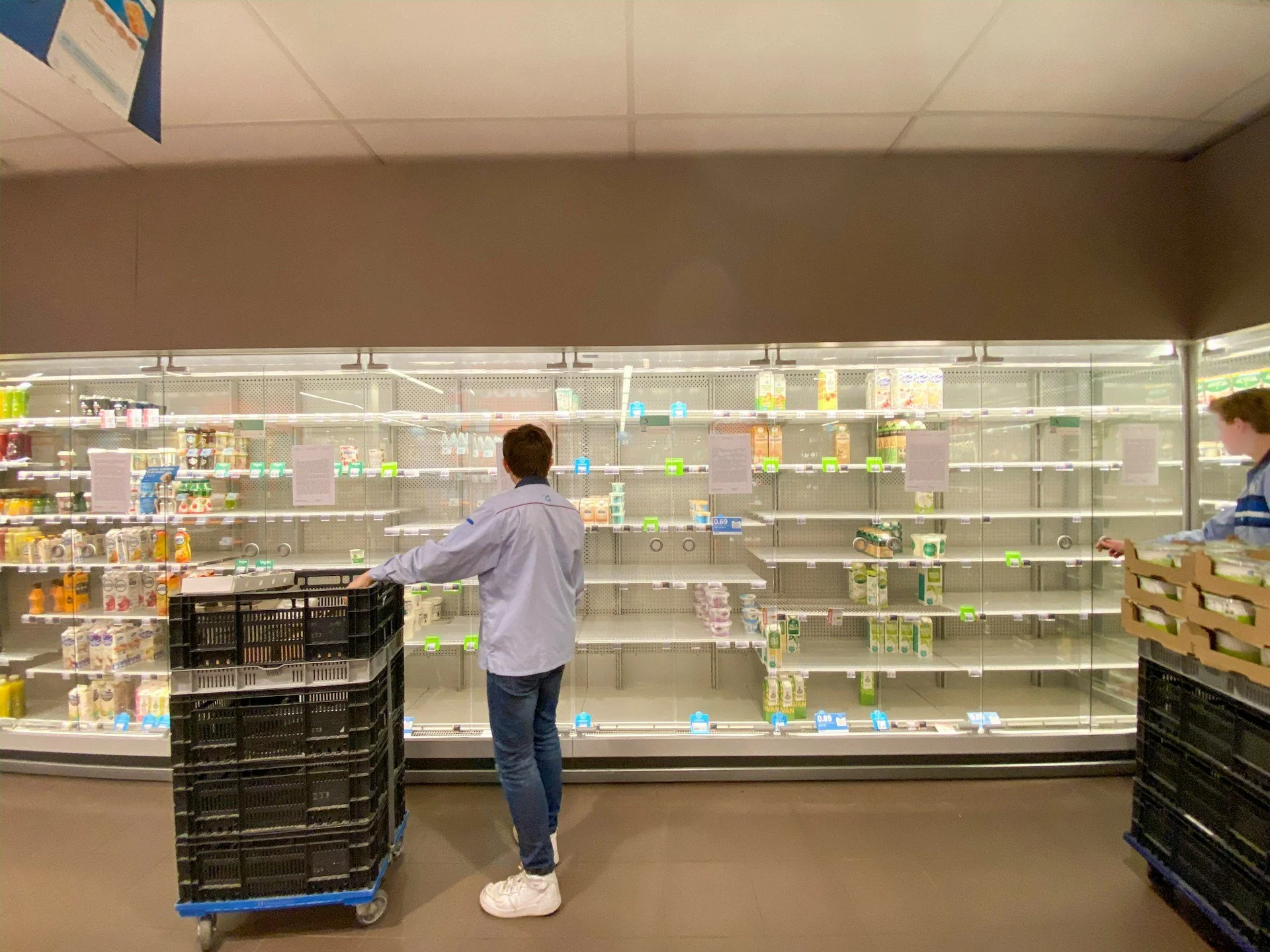The Bifurcation Economy: Why the Middle Aisle is Disappearing
The Signal
Walk through any Target and you'll notice something strange: the middle is hollowing out. Not literally—the aisles are still there—but consumer attention has polarized, reshaping how products are made, priced, and positioned. Shoppers are simultaneously trading up and trading down, often on the same shopping trip. A $200 Dutch oven sits in the cart next to store-brand pasta. Premium oat milk alongside bulk toilet paper.
This isn't about the "lipstick effect" or recession-era behavior patterns. This is a structural change disguised as consumer whimsy. And if you're building consumer products, this shift is either your biggest opportunity or your existential threat.
What's Really Happening
The bifurcation economy isn't new—luxury has always existed alongside value—but what's changed is the speed and totality with which the middle is evaporating. Our members across food, beverage, and home goods report the same pattern: mid-tier products ($30-80 range for home goods, $4-8 for food/beverage) are struggling while premium ($100+, $12+) and value ($15-25, $2-3) segments are thriving.
The cultural driver? Identity flexibility. Consumers now construct identity through strategic splurges rather than consistent brand loyalty across categories. They're not premium consumers or value consumers—they're curators of a personalized mix that signals sophistication in the categories that matter to them personally.
A coffee enthusiast will spend $85 on a pour-over kettle but buys the cheapest dish soap. The home chef invests in premium olive oil but uses basic paper towels. This isn't inconsistency—it's intentional resource allocation based on personal passion points.
The Business Reality
For CPG producers, this creates a brutal strategic choice: either you provide genuine differentiation that. commands premium pricing, or you on efficiency and value. The middle ground—"pretty good for a reasonable price"—is becoming unsustainable.
What premium really means now: It's not about prestige anymore. Premium products succeed when they deliver tangible, experiential differences that consumers can articulate. Function over flex. A $40 hot sauce works because the flavor profile is genuinely complex, not because the bottle looks expensive. Premium home textiles succeed on thread count you can feel, not brand heritage you can't.
What mass really means now: It's not about cheap—it's about smart. The winning mass products aren't racing to the bottom on price; they're delivering "good enough" so competently that spending more feels unnecessary. Think Costco's Kirkland brand or Trader Joe's private label. The quality floor has risen dramatically.
What's dying in the middle: Products that cost more than mass but can't articulate why. Brands trading on legacy reputation without innovation. The "treat yourself" tier that's neither special enough nor efficient enough.
The Home Goods Translation
Home goods producers are watching this play out in real-time. The department store model—good/better/best laddering within each brand—is collapsing. Consumers aren't climbing the ladder anymore; they're shopping different stores for different purposes.
Kitchen tools illuminate this perfectly. Consumers are either buying premium chef's knives that will last decades or buying acceptable knives at a fraction of the cost and replacing them without guilt. The mid-tier "decent knife" market is evaporating.
Furniture and decor follow the same pattern. IKEA for function, high-end for statement pieces, nothing in between. The traditional furniture store carrying "quality" pieces at "reasonable" prices can't compete with either extreme.
The F&B Translation
Food and beverage bifurcation is even more pronounced because purchase frequency is higher and experimental risk is lower.
Coffee: Consumers will pay $18 for a bag of specialty beans or buy Folgers for $8. The $12 "premium grocery store" coffee is struggling. Same with olive oil, chocolate, and even condiments.
The cultural insight: Consumers have become category experts in their passion areas. They've educated themselves through social media, YouTube, and TikTok. They know what actually matters in coffee (origin, roasting date, processing method) versus what's marketing theater. They're harder to fool and easier to impress with genuine quality.
For categories outside their expertise? Pure value play. They're not interested in learning about laundry detergent or paper towels, so they default to whatever's cheapest and adequate.
What This Means for the Next 18 Months
Premium players: Double down on education and transparency. Your customer is savvier than ever. Articulate exactly why your product costs more—and make sure the answer isn't "brand heritage" or "luxury positioning." Function, craftsmanship, sourcing, innovation. Specificity sells.
Mass players: The race isn't to the bottom—it's to "shockingly good for the price." Consumers will reward brands that overdeliver at the value tier. Think about how Costco's wines or Aldi's specialty items create genuine delight at mass price points.
Mid-tier players: You need to pick a side or find a very specific niche. The "affordable premium" position is collapsing. Either move genuinely upmarket with real differentiation, or move downmarket and compete on value and efficiency. The squeeze will only intensify.
The Counterintuitive Opportunity
Here's what most analysis misses: the bifurcation economy creates white space for category invention. When existing categories polarize, new categories can emerge that don't fit the old value/premium framework.
Consider how brands like Liquid Death (premium water in punk packaging) or Olipop (functional soda) have created entirely new categories that transcend traditional segmentation. They're not competing on the premium/value spectrum—they're redefining the category itself.
For home goods, we're seeing this in "multi-use" products that justify premium pricing through versatility rather than luxury. Or products that blend categories entirely—cookware that works as serveware, furniture that transforms function.
The middle isn't dying because consumers are irrational or because the economy is uncertain. It's dying because consumers are more sophisticated and more intentional than ever before. They've learned to spot genuine value and genuine quality, and they're not interested in the vague territory in between.

